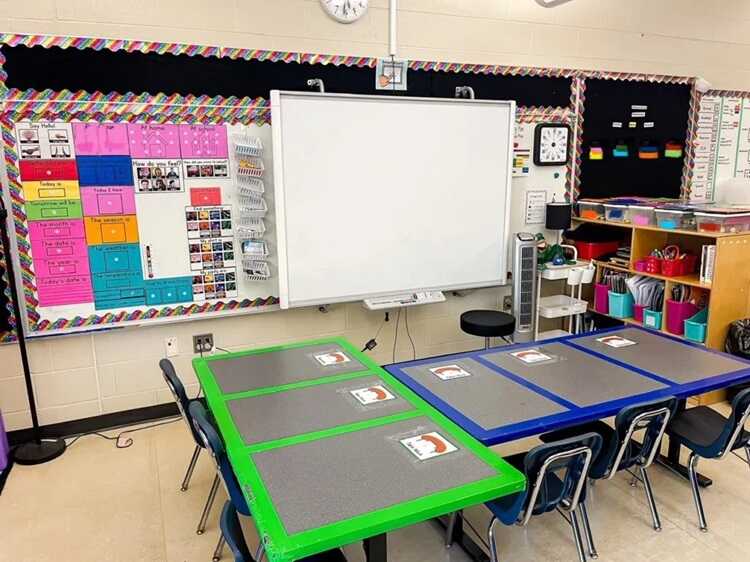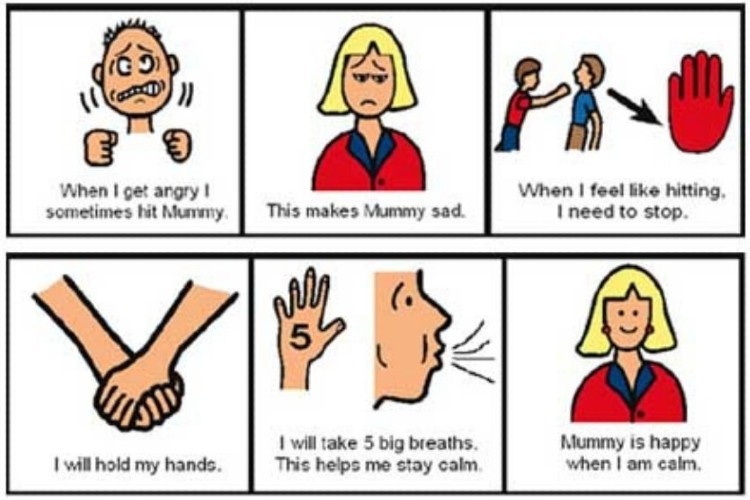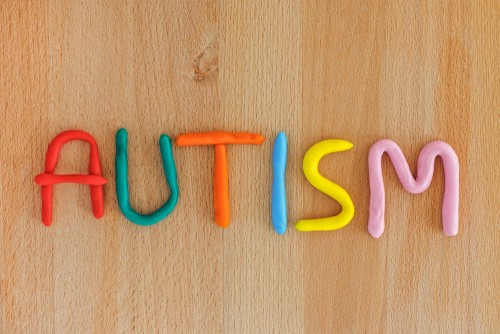Smooth Skies Ahead: A Parent’s Guide to Air Travel with Children with Autism
Traveling can be stressful, but for children with autism, the unpredictability of air travel can heighten anxiety and sensory overload with large crowds and unfamiliar environments. However, with thoughtful preparation and a proactive approach, flying can be a positive experience for everyone involved. Below, we’ll share planning tips, preparing, and making the day of travel smoother for families with autistic children.

Air Travel with Children with Autism: Planning Ahead
Flying with children can be challenging, but when your child is on the autism spectrum, careful preparation becomes even more crucial. The unique sensory, social, and communication needs of children with autism mean that planning ahead can make the difference between a stressful experience and a successful journey. By addressing potential obstacles in advance and tailoring the travel experience to your child’s specific needs, you can reduce anxiety and create a more enjoyable trip for everyone.
Here are some strategies to help you prepare effectively:
- Choose Flights Strategically:
- Select flight times that align with your child’s most comfortable and calm parts of the day.
- Avoid red-eye or overnight flights that might disrupt your child’s sleep routine.
- Consider Layovers:
- Break the journey into smaller segments for international travel with hotel stays during layovers.
- Choose flights that minimize the time spent in crowded airports.
- Seating Arrangements:
- Request bulkhead or aisle seats for extra space and accessibility.
- Emergency Contact Information:
- Use temporary tattoos, stickers, or clip-ons with emergency contact details in case your child elopes.
- Communicate with the Airline:
- Inform airline staff about your child’s needs, including allergies, medications, and communication styles.
- Notify flight attendants of potential behaviors like stimming to avoid misunderstandings.
How to Prepare for TSA: Autism Notification Cards for Smooth Air Travel with Children
Navigating airport security can be one of the most challenging parts of travel. The TSA offers resources to help:
TSA Notification Card:
- Download and print the card from tsa.gov.
- Call TSA (855-787-2227) 72 hours before your flight to request assistance.
- The card alerts TSA officers about your child’s autism, ensuring a smoother conversation about accommodations.
Passenger Support Specialists:
- Enlist a TSA specialist to guide your child through the screening process with patience and care.
Air Travel with Children with Autism: Preparing Your Child
Preparation helps your child feel more comfortable with the travel experience:
- Social Stories:
- Create a social story detailing every journey step, from check-in to takeoff.
- Use the story as a visual checklist on travel day.
- Airport Familiarization:
- Visit the airport before your trip to explore key areas.
- Practice walking through TSA and locating gates, if allowed by airport staff.
- Mock Flights:
- Some airlines and airports offer mock flight experiences for children with autism. Check with your local airport for programs.
Airline Programs and Tips for Traveling with Children with Autism
Air travel can be a daunting experience for families of children with autism, but there are programs and resources designed to make the journey smoother and less stressful.
Wings for Autism® / Wings for All®: Airport Rehearsals for Families
The Wings for Autism®/Wings for All® program offers airport “rehearsals” specifically designed for individuals with autism spectrum disorders and intellectual or developmental disabilities. These events provide families with the opportunity to practice the entire airport experience, including:
- Entering the airport
- Obtaining boarding passes
- Going through security
- Boarding a plane
These rehearsals not only help families prepare for the travel day, but they also give airport and airline staff—including TSA professionals—a chance to practice delivering their services in a structured learning environment.
Events are held at major airports such as:
- Denver International Airport
- Syracuse Hancock International Airport
- Dulles International Airport
- Dane County Regional Airport
If these locations aren’t convenient, families can request events at airports closer to their homes.
Booking Flights: Tips for a Better Experience
Direct flights are often the best choice for families traveling with children with autism, as they reduce the complexities of layovers and additional transitions.
The DPNA Flight Code: Assistance for Passengers with Disabilities
When booking flights, families can request a Special Service Request (SSR) code known as DPNA. This code stands for “Disabled Passenger with Intellectual or Developmental Disability Needing Assistance” and alerts the airline to provide appropriate support for your family during travel.
These resources and tips can significantly reduce the stress of air travel and ensure a smoother experience for both parents and children.

Day-of Travel: Dos and Don’ts
The day of your flight can go more smoothly with these tips:
Dos:
- Bring favorite toys, sensory items (stress balls, sensory brushes, sensory bottles), personal tablets, or oral chews for comfort.
- Pack noise-canceling headphones to reduce sensory overload.
- Take breaks for movement, snacks, and restroom stops.
- Stay flexible and adaptable to the situation.
- Ask airline staff for help as needed.
Don’ts:
- Don’t forget caregiver breaks, especially during long journeys.
- Avoid boarding too early to reduce your child’s time in a confined space.
- Don’t hesitate to request deplaning first once the flight has landed.
How LeafWing Center Can Help
Preparing for air travel can feel overwhelming, but you don’t have to do it alone. At LeafWing Center, we specialize in helping families develop tailored strategies to prepare children with autism for new experiences like air travel.
- Social Story Development: We work with parents to create personalized visual aids and checklists.
- Behavioral Coaching: Our team provides guidance on managing potential challenges during the trip.
- Airport Desensitization Programs: We can help families practice navigating airports to reduce anxiety.
With our support, you can feel confident that your child is ready to take on the skies. Contact LeafWing Center today to learn more about our services and resources!
Key Takeaways
- Preparation is Essential:
- Plan flights during times that suit your child’s routine and comfort levels.
- Familiarize your child with the airport and flying experience beforehand.
- Leverage Resources:
- Use tools like the TSA Notification Card and enlist TSA Passenger Support Specialists to ease the security process.
- Communicate your child’s needs to airline staff to ensure understanding and support.
- Bring Comfort Items:
- Pack sensory tools, favorite toys, and noise-canceling headphones to help manage your child’s needs during travel.
- Practice Flexibility:
- Be ready to adapt plans and ask for help from airline staff when needed.
- Focus on making the journey as stress-free as possible, even if things don’t go perfectly.
- Seek Professional Support:
- Organizations like LeafWing Center can help prepare your child for the experience with personalized strategies, social stories, and airport desensitization programs.
These actionable tips can help ensure a more enjoyable travel experience for you and your child!
Glossary Terms
Other Related Articles:
- Social Stories and Autism
- Traveling with your child with autism
- Autism And Motivation In Children
- What Approach Should Caregivers Take with Challenging Behaviors?
- What Not To Do With A Child With Autism
Frequently asked questions about ABA therapy
What is ABA Therapy used for?
ABA-based therapy can be used in a multitude of areas. Currently, these interventions are used primarily with individuals living with ASD; however, their applications can be used with individuals living with pervasive developmental disorders as well as other disorders. For ASD, it can be used in effectively teaching specific skills that may not be in a child’s repertoire of skills to help him/her function better in their environment whether that be at home, school, or out in the community. In conjunction with skill acquisition programs, ABA-based interventions can also be used in addressing behavioral excesses (e.g., tantrum behaviors, aggressive behaviors, self-injurious behaviors). Lastly, it can also be utilized in parent/caregiver training.
In skill acquisition programs, a child’s repertoire of skills is assessed in the beginning phase of the services in key adaptive areas such as communication/language, self-help, social skills, and motor skills as well. Once skills to be taught are identified, a goal for each skill is developed and then addressed/taught by using ABA-based techniques to teach those important skills. Ultimately, an ABA-based therapy will facilitate a degree of maintenance (i.e., the child can still perform the learned behaviors in the absence of training/intervention over time) and generalization (i.e., the learned behaviors are observed to occur in situations different from the instructional setting). These two concepts are very important in any ABA-based intervention.
In behavior management, the challenging behaviors are assessed for their function in the beginning phase of the services. In this phase, the “why does this behavior happen in the first place?” is determined. Once known, an ABA-based therapy will be developed to not just decrease the occurrence of the behavior being addressed, but also teach the child a functionally-equivalent behavior that is socially-appropriate. For example, if a child resorts to tantrum behaviors when she is told she cannot have a specific item, she may be taught to accept an alternative or find an alternative for herself. Of course, we can only do this up to a certain point—the offering of alternatives. There comes a point when a ‘no’ means ‘no’ so the tantrum behavior will be left to run its course (i.e., to continue until it ceases). This is never easy and will take some time for parents/caregivers to get used to, but research has shown that over time and consistent application of an ABA-based behavior management program, the challenging behavior will get better.
In parent training, individuals that provide care for a child may receive customized “curriculum” that best fit their situation. A typical area covered in parent training is teaching responsible adults pertinent ABA-based concepts to help adults understand the rationale behind interventions that are being used in their child’s ABA-based services. Another area covered in parent training is teaching adults specific skill acquisition programs and/or behavior management programs that they will implement during family time. Other areas covered in parent training may be data collection, how to facilitate maintenance, how to facilitate generalization of learned skills to name a few.
There is no “one format” that will fit all children and their families’ needs. The ABA professionals you’re currently working with, with your participation, will develop an ABA-based treatment package that will best fit your child’s and your family’s needs. For more information regarding this topic, we encourage you to speak with your BCBA or reach out to us at info@leafwingcenter.org.
Who Can Benefit From ABA Therapy?
There is a common misconception that the principles of ABA are specific to Autism. This is not the case. The principles and methods of ABA are scientifically backed and can be applied to any individual. With that said, the U.S. Surgeon General and the American Psychological Association consider ABA to be an evidence based practice. Forty years of extensive literature have documented ABA therapy as an effective and successful practice to reduce problem behavior and increase skills for individuals with intellectual disabilities and Autism Spectrum Disorders (ASD). Children, teenagers, and adults with ASD can benefit from ABA therapy. Especially when started early, ABA therapy can benefit individuals by targeting challenging behaviors, attention skills, play skills, communication, motor, social, and other skills. Individuals with other developmental challenges such as ADHD or intellectual disability can benefit from ABA therapy as well. While early intervention has been demonstrated to lead to more significant treatment outcomes, there is no specific age at which ABA therapy ceases to be helpful.
Additionally, parents and caregivers of individuals living with ASD can also benefit from the principles of ABA. Depending on the needs of your loved one, the use of specified ABA techniques in addition to 1:1 services, may help produce more desirable treatment outcomes. The term “caregiver training” is common in ABA services and refers to the individualized instruction that a BCBA or ABA Supervisor provides to parents and caregivers. This typically involves a combination of individualized ABA techniques and methods parents and caregivers can use outside of 1:1 sessions to facilitate ongoing progress in specified areas.
ABA therapy can help people living with ASD, intellectual disability, and other developmental challenges achieve their goals and live higher quality lives.
What does ABA Therapy look like?
Agencies that provide ABA-based services in the home-setting are more likely to implement ABA services similarly than doing the same exact protocols or procedures. Regardless, an ABA agency under the guidance of a Board-Certified Behavior Analyst follows the same research-based theories to guide treatment that all other acceptable ABA agencies use.
ABA-based services start with a functional behavior assessment (FBA). In a nutshell, a FBA assesses why the behaviors may be happening in the first place. From there, the FBA will also determine the best way to address the difficulties using tactics that have been proven effective over time with a focus on behavioral replacement versus simple elimination of a problem behavior. The FBA will also have recommendations for other relevant skills/behaviors to be taught and parent skills that can be taught in a parent training format to name a few. From there, the intensity of the ABA-based services is determined, again, based on the clinical needs of your child. The completed FBA is then submitted to the funding source for approval.
One-on-one sessions between a behavior technician and your child will start once services are approved. The duration per session and the frequency of these sessions per week/month will all depend on how many hours your child’s ABA services have been approved for—usually, this will be the number recommended in the FBA. The sessions are used to teach identified skills/behaviors via effective teaching procedures. Another aspect of ABA-based services in the home-setting is parent training. Parent training can take many forms depending on what goals have been established during the FBA process. The number of hours dedicated for parent training is also variable and solely depends on the clinical need for it. If a 1:1 session is between a behavior technician and your child, a parent training session or appointment is between you and the case supervisor and with and without your child present, depending on the parent goal(s) identified. Parent training service’s goal is for you to be able to have ample skills/knowledge in order for you to become more effective in addressing behavioral difficulties as they occur outside of scheduled ABA sessions. Depending on the goals established, you may be required to participate in your child’s 1:1 sessions. These participations are a good way for you to practice what you have learned from the case supervisor while at the same time, having the behavior technician available to you to give you feedback as you practice on those new skills.
As mentioned in the beginning, no two ABA agencies will do the same exact thing when it comes to providing ABA services; however, good agencies will always base their practice on the same empirically-proven procedures.
How do I start ABA Therapy?
In most cases, the first item required to start ABA therapy is the individual’s autism spectrum disorder (ASD) diagnosis report. This is typically conducted by a doctor such as a psychiatrist, psychologist, or a developmental pediatrician. Most ABA therapy agencies and insurance companies will ask for a copy of this diagnosis report during the intake process as it is required to request an ABA assessment authorization from the individual’s medical insurance provider.
The second item required to start ABA therapy is a funding source. In the United States, and in cases where Medi-Cal or Medicare insurances are involved, there is a legal requirement for ABA services to be covered when there is a medical necessity (ASD diagnosis). Medi-Cal and Medicare cover all medically necessary behavioral health treatment services for beneficiaries. This typically includes children diagnosed with ASD. Since Applied Behavior Analysis is an evidence based and effective treatment for individuals with ASD, it is considered a covered treatment when medically necessary. In many cases, private insurance will also cover ABA services when medically necessary, however in these cases, it is best to speak directly with your medical insurance provider to determine the specifics of the coverage and to ensure that ABA is in fact, a covered benefit. Additionally, some families opt to pay for ABA services out-of-pocket.
The next step to starting ABA therapy is to contact an ABA provider whom you are interested in working with. Depending on your geographic location, ABA agencies exist in many cities across the United States. Your insurance carrier, local support groups, and even a thorough online search can help you find reputable and properly credentialed ABA agencies near you. Our organization, LeafWing Center, is based in southern California and is recognized for aiding people with ASD achieve their goals with the research based on applied behavior analysis.
Once you have identified the ABA provider with whom you wish to work, they should help you facilitate the next steps. These will include facilitating paperwork and authorizations with your funding source. Once the assessment process begins, a BCBA (Board Certified Behavior Analyst) or qualified Program Supervisor should get in contact with you to arrange times in which interviews with parents/caregivers and observations of your loved one can be conducted. This will help in the process of gathering important clinical information so that with your collaboration, the most effective treatment plans and goals can be established for your loved one. This process is referred to as the Functional Behavior Assessment (FBA) and is elaborated on in different blog posts on our website. With regard as to what can be expected once ABA therapy begins, please read our blog post titled: When You Start an ABA program, What Should You Reasonably Expect from Your Service Provider?

































